Abstract
We assembled an international collection of strains from sporadic and epidemic human infection with Streptococcus zooepidemicus (Lancefield group C) for laboratory study. Cultural and physiological characteristics of the isolates were determined, including biotyping with the API 20 STREP test kit and susceptibility testing with penicillin, erythromycin and tetracycline. The strains were examined for bacteriocin production and sensitivity and typed with a specially developed group-C streptococcal bacteriophage system incorporating a panel of 14 phages. Results of these tests gave useful discrimination between many of the strains: differences were shown between each of the major outbreak strains, including those complicated by post-streptococcal glomerulonephritis. Serious group C streptococcal infection may be caused by S. zooepidemicus and isolates should be identified to species level; the application of a typing scheme such as this may help to distinguish epidemiological patterns of infection.
Full text
PDF
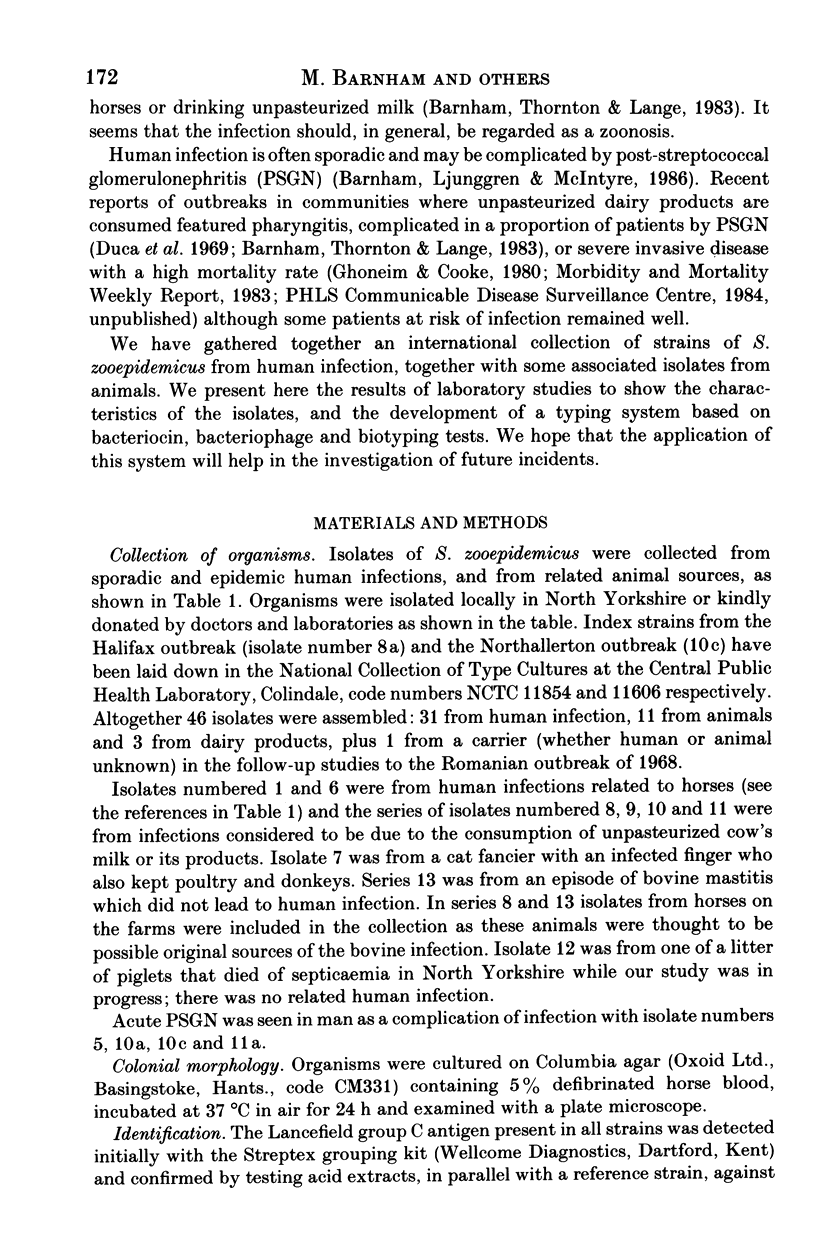

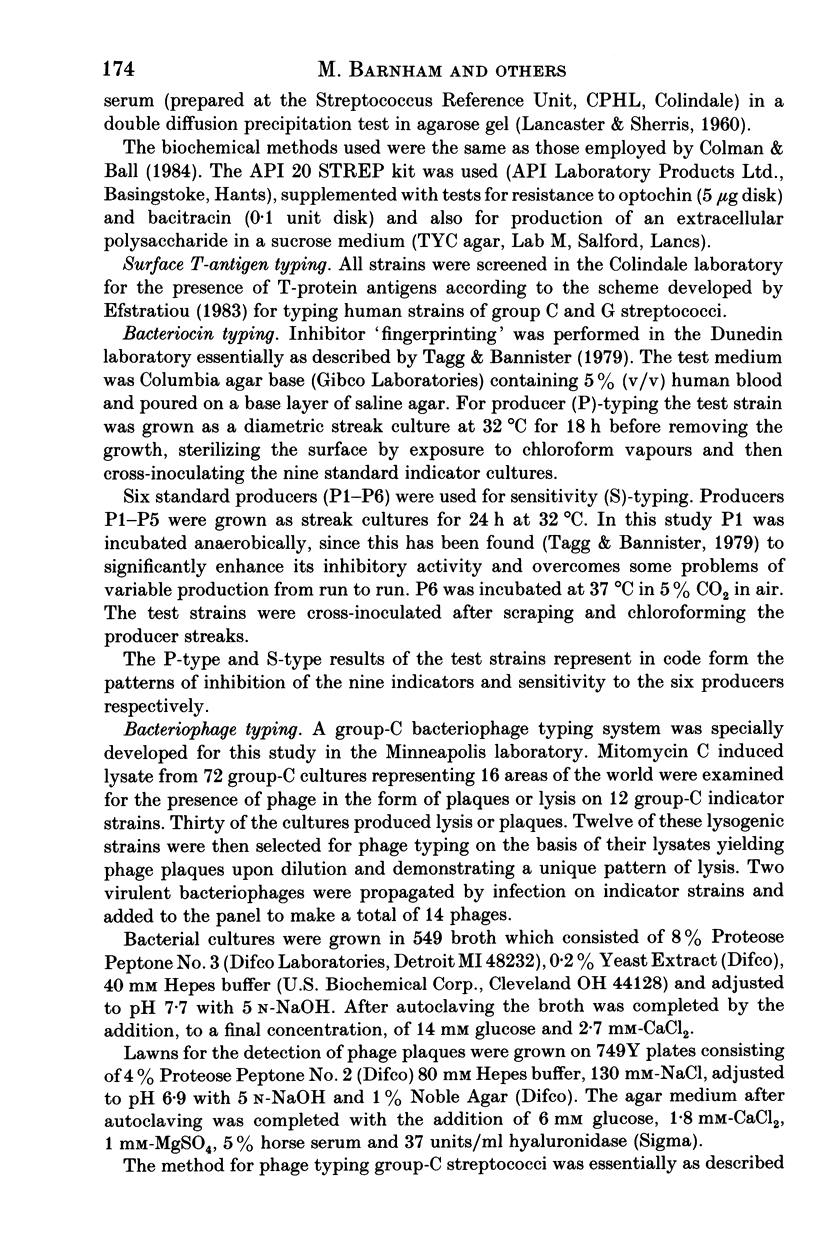

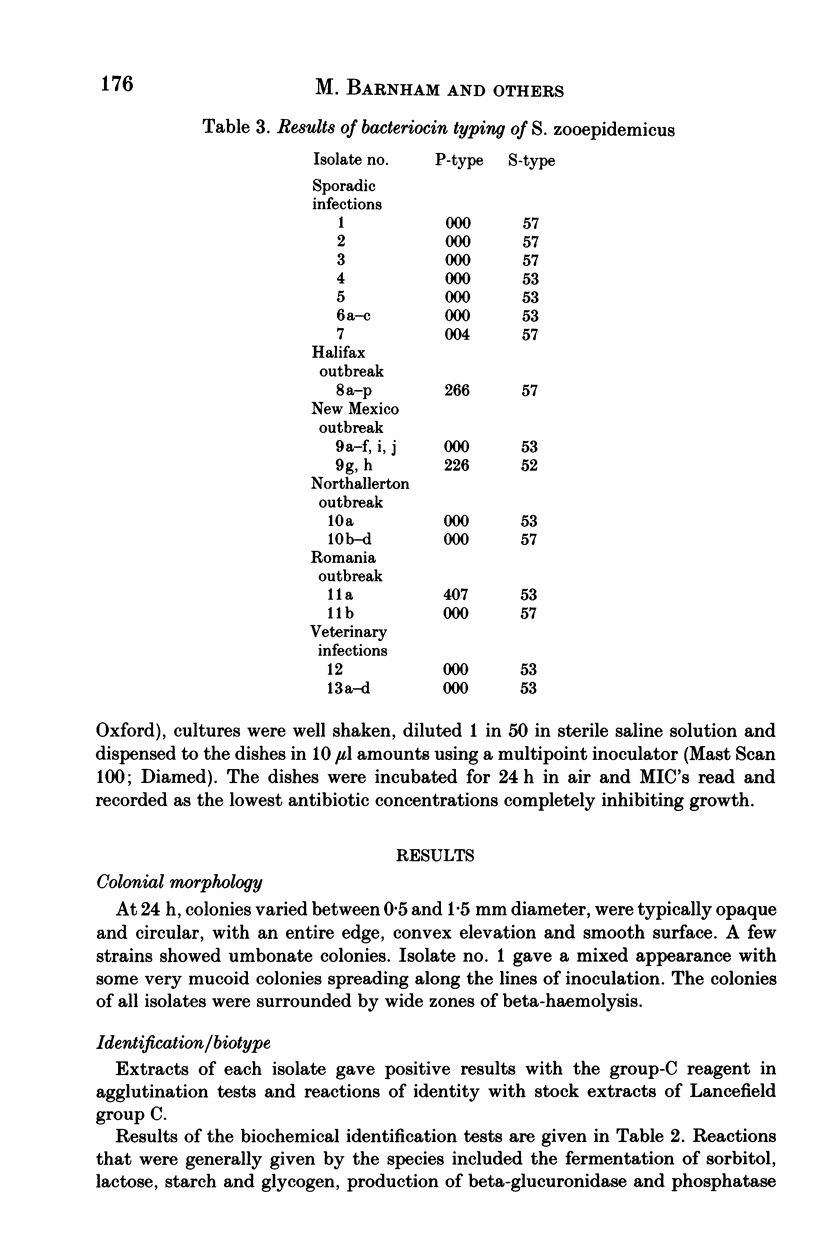
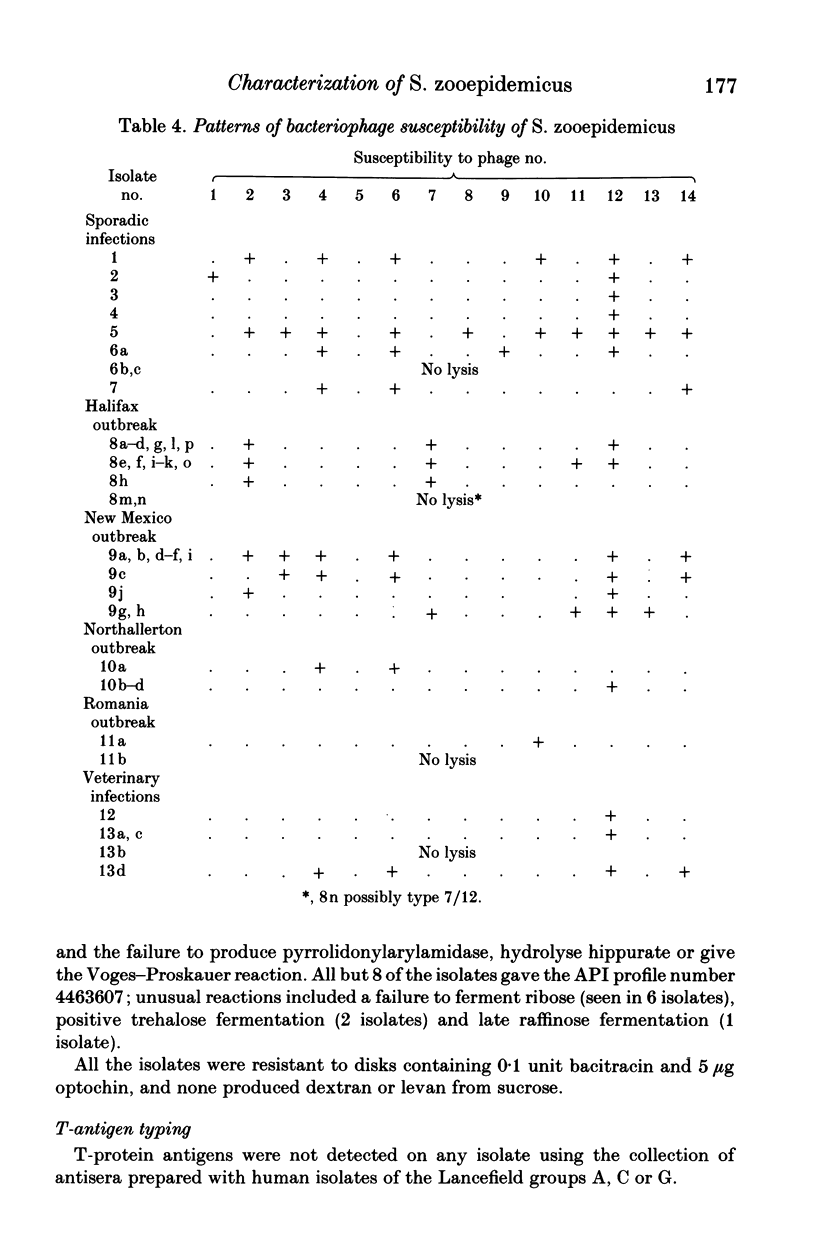
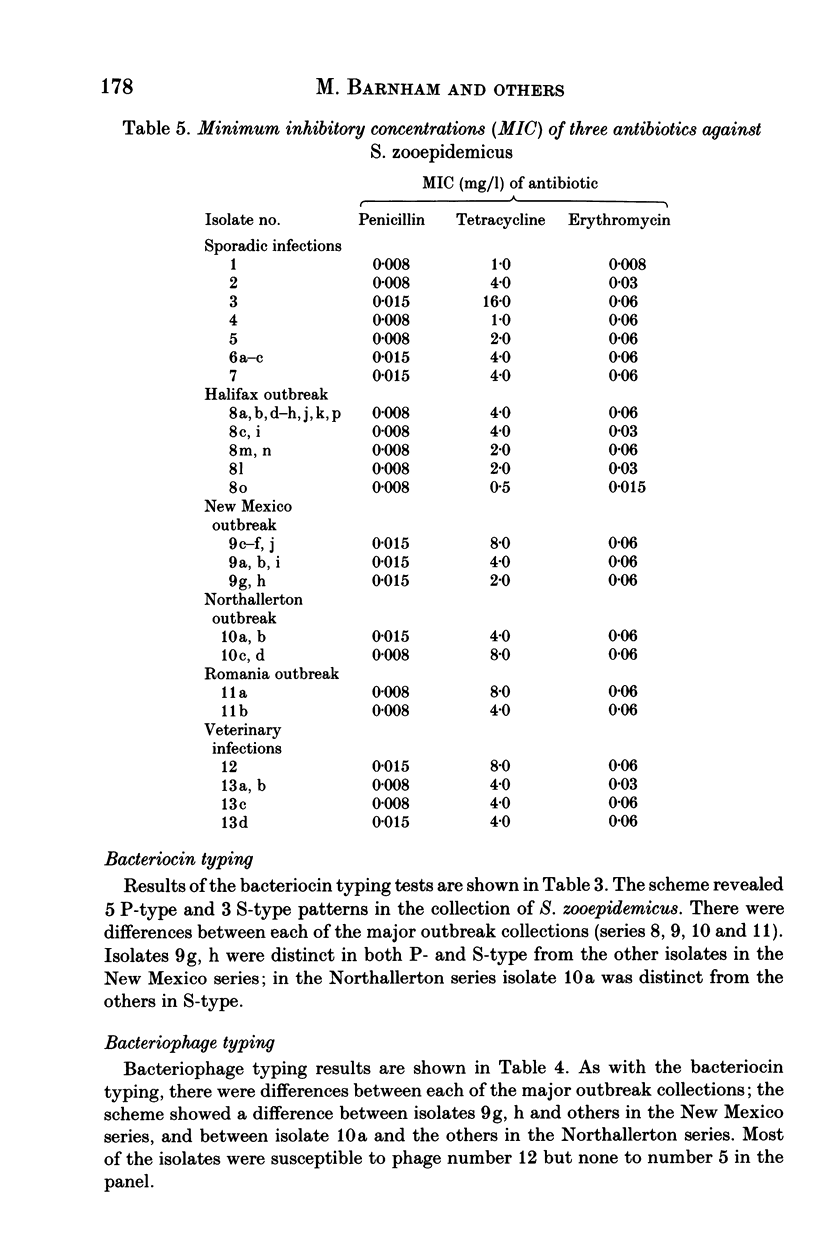
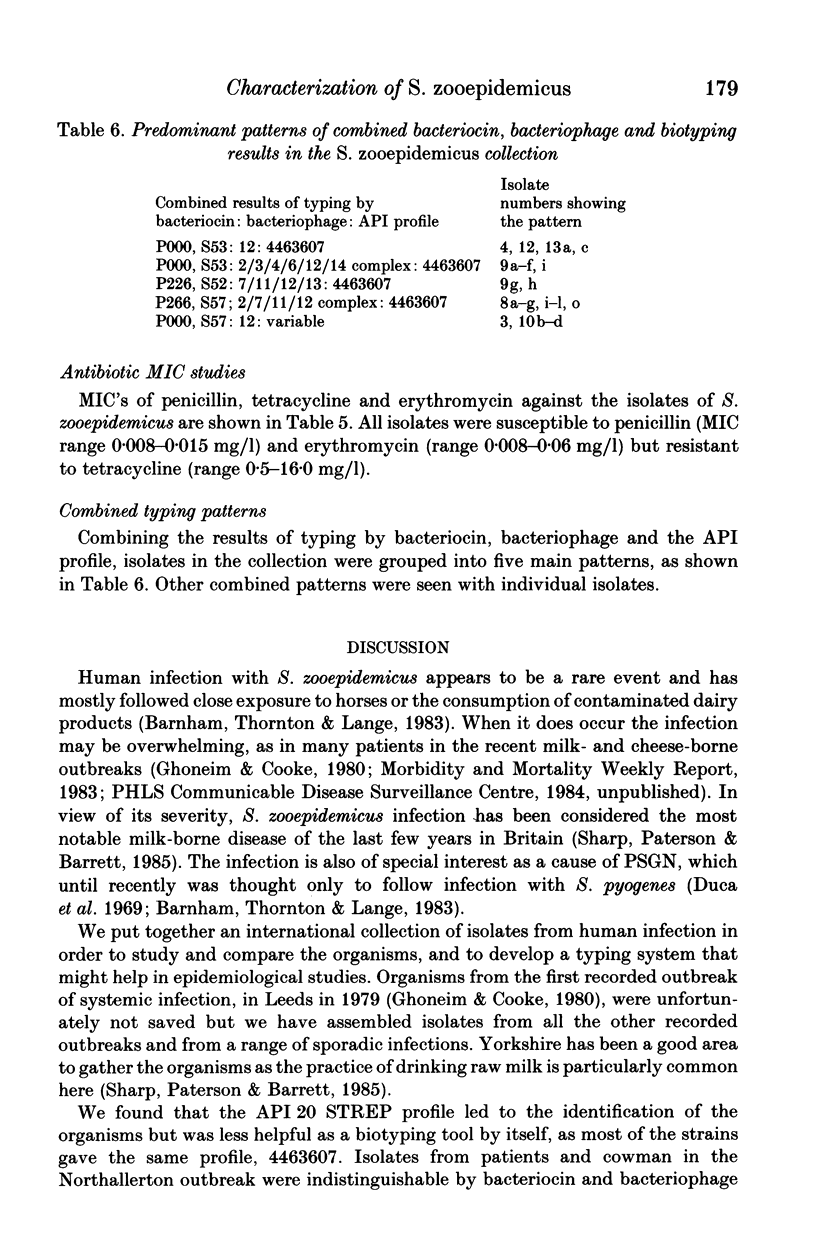
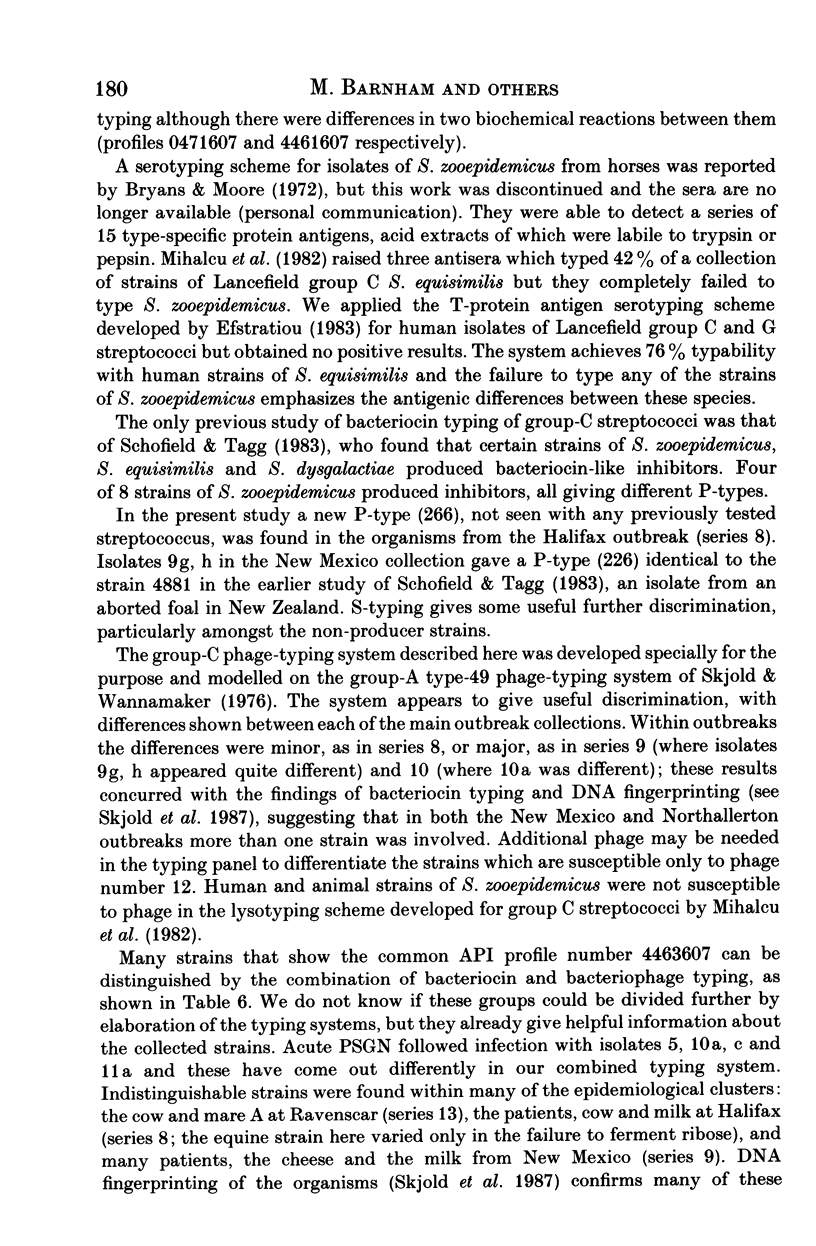
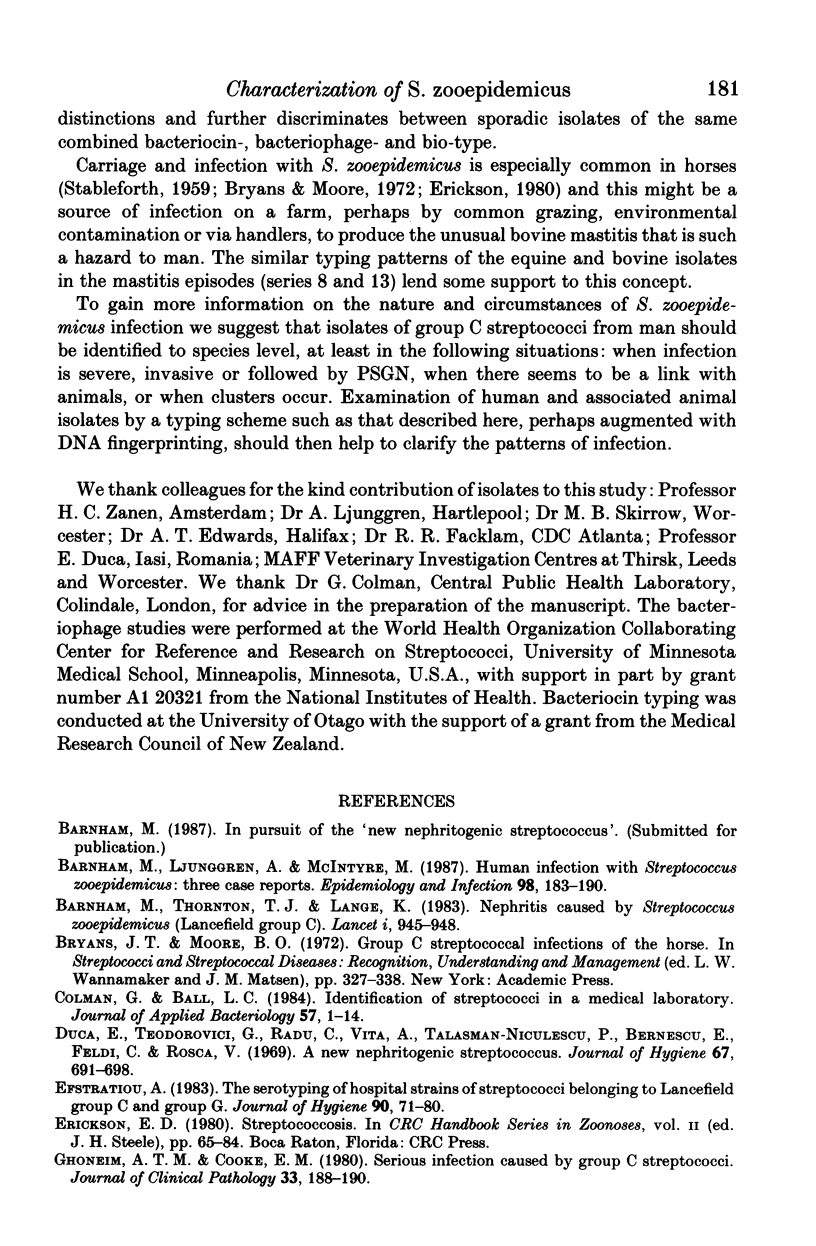
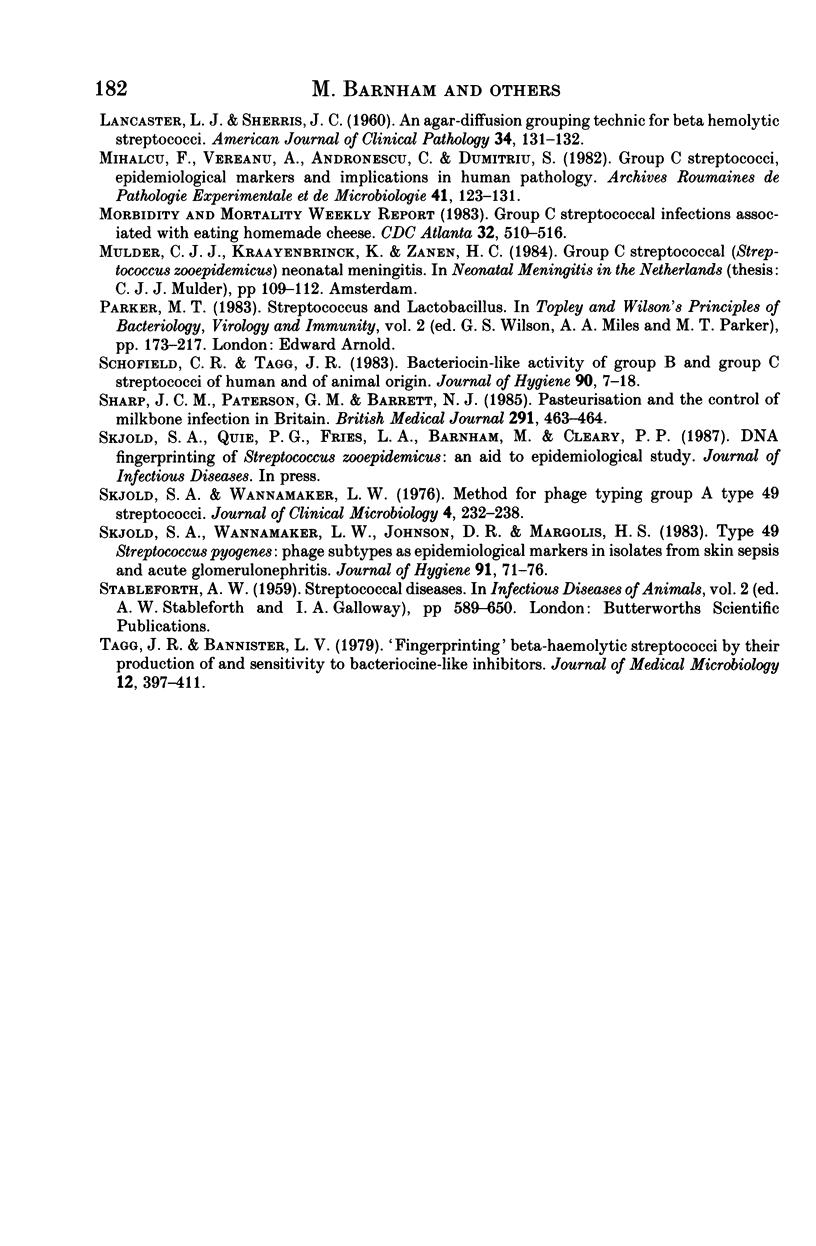
Selected References
These references are in PubMed. This may not be the complete list of references from this article.
- Barnham M., Ljunggren A., McIntyre M. Human infection with Streptococcus zooepidemicus (Lancefield group C): three case reports. Epidemiol Infect. 1987 Apr;98(2):183–190. doi: 10.1017/s0950268800061896. [DOI] [PMC free article] [PubMed] [Google Scholar]
- Barnham M., Thornton T. J., Lange K. Nephritis caused by Streptococcus zooepidemicus (Lancefield group C). Lancet. 1983 Apr 30;1(8331):945–948. doi: 10.1016/s0140-6736(83)92078-0. [DOI] [PubMed] [Google Scholar]
- Centers for Disease Control (CDC) Group C streptococcal infections associated with eating homemade cheese--New Mexico. MMWR Morb Mortal Wkly Rep. 1983 Oct 7;32(39):510, 515-6. [PubMed] [Google Scholar]
- Colman G., Ball L. C. Identification of streptococci in a medical laboratory. J Appl Bacteriol. 1984 Aug;57(1):1–14. doi: 10.1111/j.1365-2672.1984.tb02351.x. [DOI] [PubMed] [Google Scholar]
- Duca E., Teodorovici G., Radu C., Vî A., Talaşman-Niculescu P., Bernescu E., Feldi C., Roşca V. A new nephritogenic streptococcus. J Hyg (Lond) 1969 Dec;67(4):691–698. doi: 10.1017/s0022172400042145. [DOI] [PMC free article] [PubMed] [Google Scholar]
- Efstratiou A. The serotyping of hospital strains of streptococci belonging to Lancefield group C and group G. J Hyg (Lond) 1983 Feb;90(1):71–80. doi: 10.1017/s0022172400063865. [DOI] [PMC free article] [PubMed] [Google Scholar]
- Ghoneim A. T., Cooke E. M. Serious infection caused by group C streptococci. J Clin Pathol. 1980 Feb;33(2):188–190. doi: 10.1136/jcp.33.2.188. [DOI] [PMC free article] [PubMed] [Google Scholar]
- LANCASTER L. J., SHERRIS J. C. An agar-diffusion grouping technic for beta hemolytic streptococi. Am J Clin Pathol. 1960 Aug;34:131–132. doi: 10.1093/ajcp/34.2.131. [DOI] [PubMed] [Google Scholar]
- Mihalcu F., Vereanu A., Andronescu C., Dumitriu S. Group C streptococci, epidemiologic markers and implications in human pathology. Arch Roum Pathol Exp Microbiol. 1982 Apr-Jun;41(2):123–131. [PubMed] [Google Scholar]
- Schofield C. R., Tagg J. R. Bacteriocin-like activity of group B and group C streptococci of human and of animal origin. J Hyg (Lond) 1983 Feb;90(1):7–18. doi: 10.1017/s0022172400063774. [DOI] [PMC free article] [PubMed] [Google Scholar]
- Sharp J. C., Paterson G. M., Barrett N. J. Pasteurisation and the control of milkborne infection in Britain. Br Med J (Clin Res Ed) 1985 Aug 17;291(6493):463–464. doi: 10.1136/bmj.291.6493.463. [DOI] [PMC free article] [PubMed] [Google Scholar]
- Skjold S. A., Wannamaker L. W., Johnson D. R., Margolis H. S. Type 49 Streptococcus pyogenes: phage subtypes as epidemiological markers in isolates from skin sepsis and acute glomerulonephritis. J Hyg (Lond) 1983 Aug;91(1):71–76. doi: 10.1017/s0022172400060046. [DOI] [PMC free article] [PubMed] [Google Scholar]
- Skjold S. A., Wannamaker L. W. Method for phage typing group A type 49 streptococci. J Clin Microbiol. 1976 Sep;4(3):232–238. doi: 10.1128/jcm.4.3.232-238.1976. [DOI] [PMC free article] [PubMed] [Google Scholar]
- Tagg J. R., Bannister L. V. "Fingerprinting" beta-haemolytic streptococci by their production of and sensitivity to bacteriocine-like inhibitors. J Med Microbiol. 1979 Nov;12(4):397–411. doi: 10.1099/00222615-12-4-397. [DOI] [PubMed] [Google Scholar]


